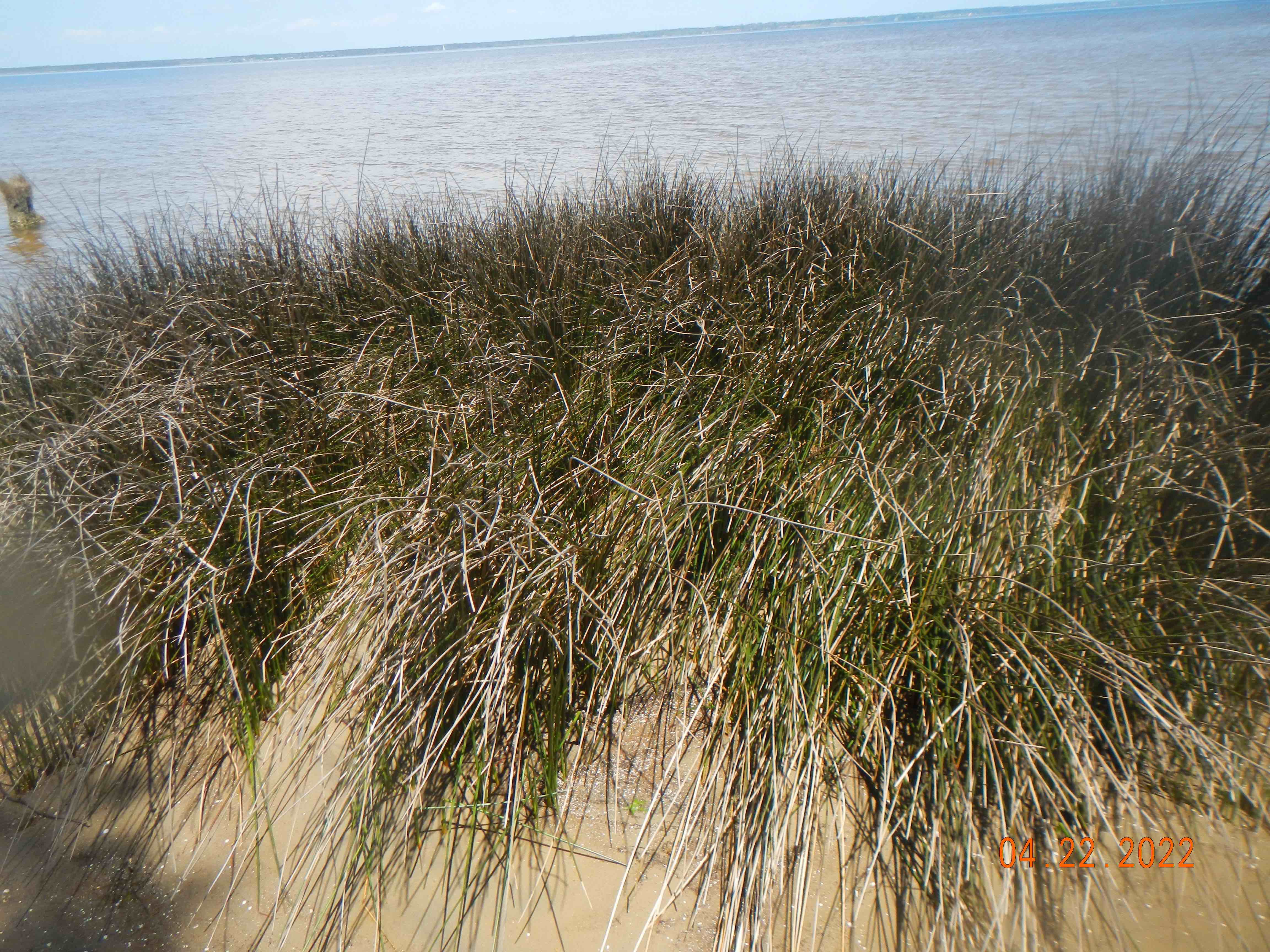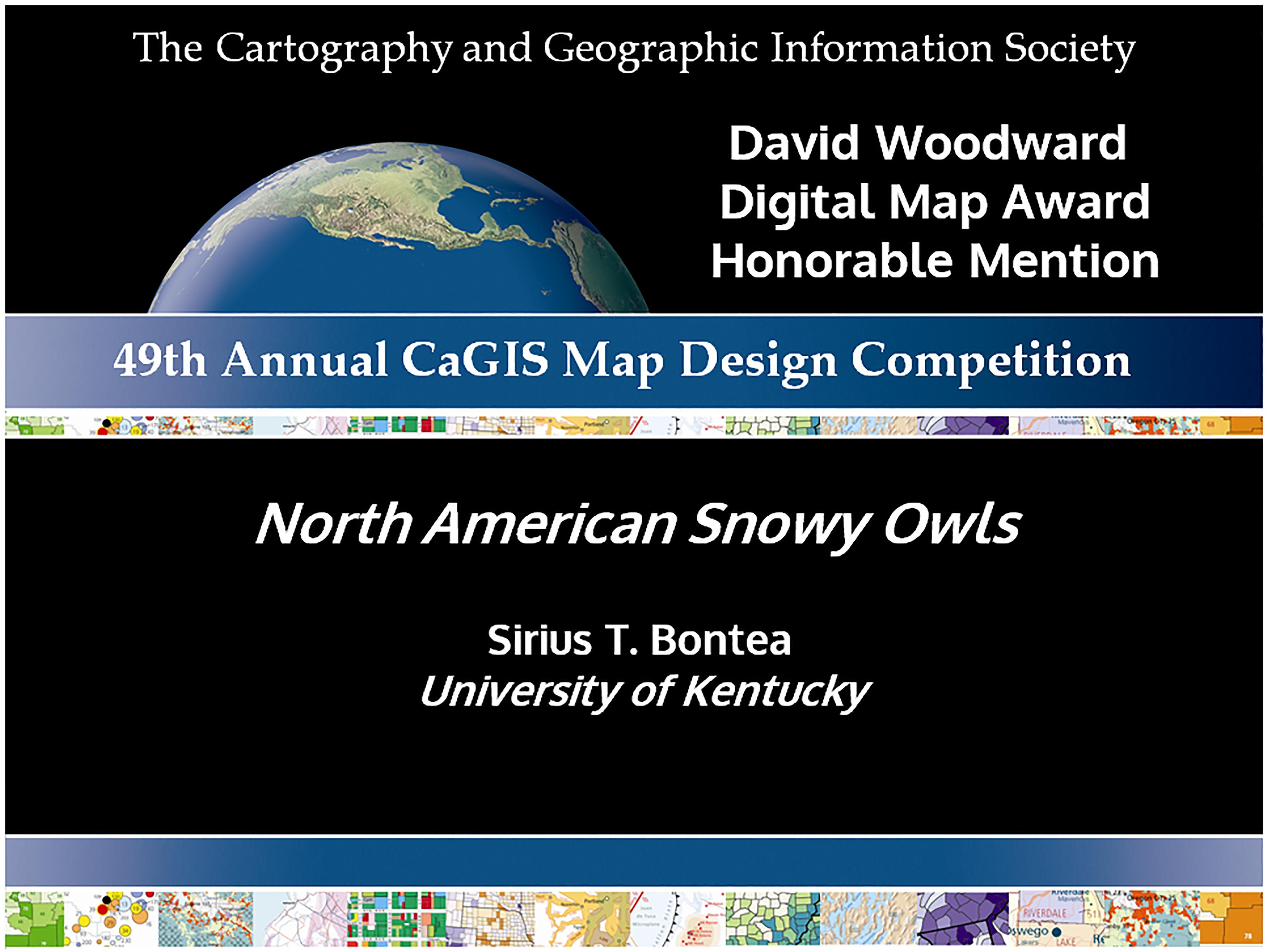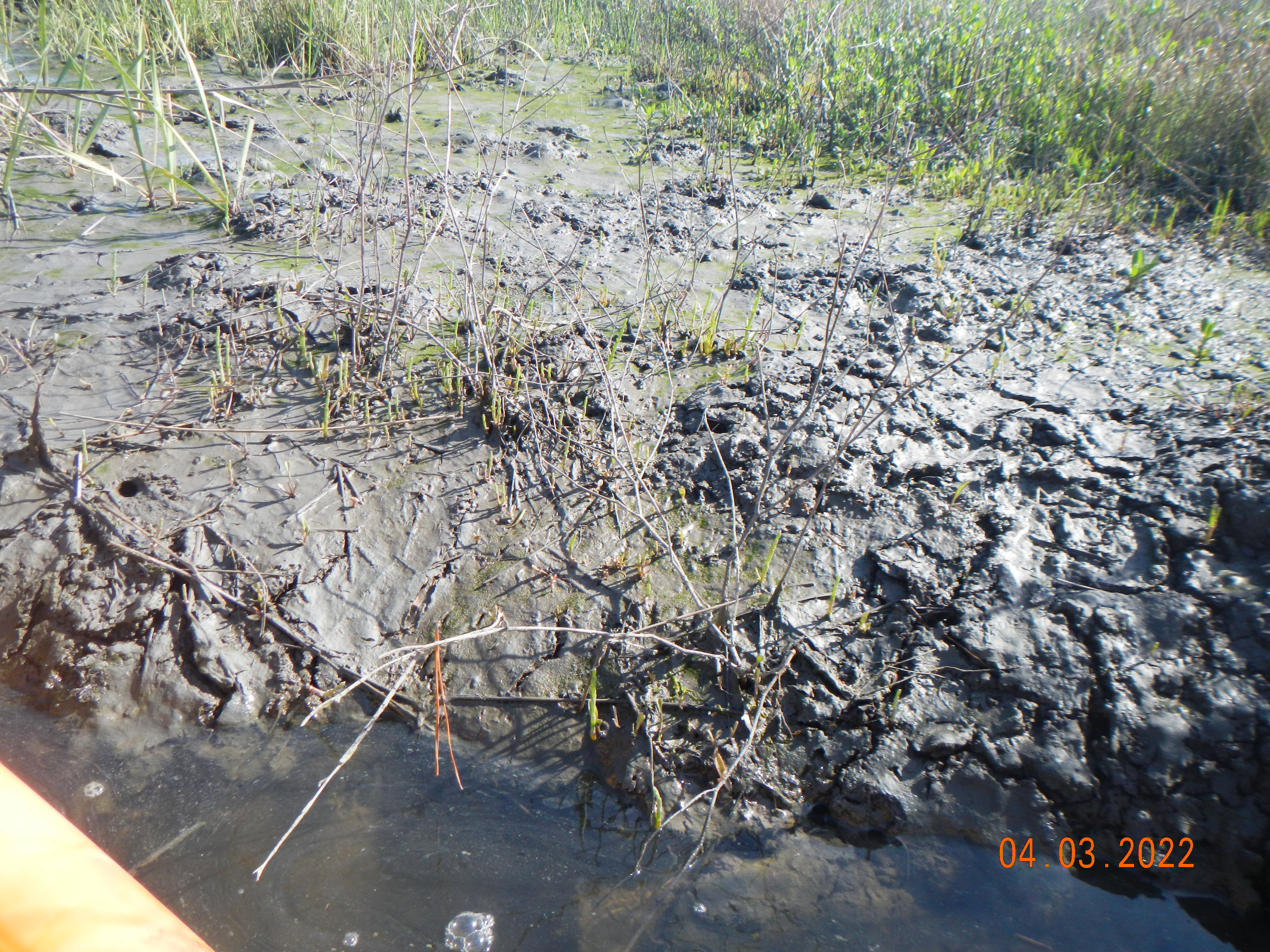TALKING JUNCUS
Juncus romerianus or black needlerush is a graminoid plant that grows in coastal marshes from Virginia down the southeastern coast and around the Gulf of Mexico to Texas. It has high salinity tolerance and is often found in salt marshes, but can grow in near-about fresh water and everything in between. It has no direct, consumptive economic use that I know of (though in pre-industrial times it was used as a needle; hence the common name). However, anecdotal evidence from my neck of the woods suggests that it is highly resistant to erosion and perhaps a good candidate for “living shoreline” erosion control and wetland restoration.

Juncus roemerianus near my house.
A quick-and-dirty literature search didn’t turn up anything on marsh fringe erosion or erosion resistance focused on needlerush, though there is plenty of field and experimental evidence of its efficacy in trapping sediment and promoting deposition. I have seen it eroded away where it becomes undermined, and the surface layer it is rooted in collapses.


 LEXINGTON, Ky. (April 22, 2022) — Eleven university faculty and teaching assistants were recognized by the University of Kentucky with the 2022 Outstanding Teaching Awards on Thursday, April 21, in the J. David Rosenberg College of Law Grand Courtroom.
LEXINGTON, Ky. (April 22, 2022) — Eleven university faculty and teaching assistants were recognized by the University of Kentucky with the 2022 Outstanding Teaching Awards on Thursday, April 21, in the J. David Rosenberg College of Law Grand Courtroom. 